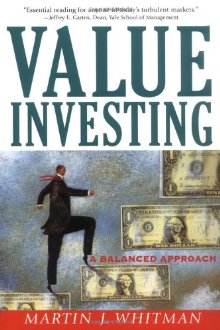Seagate (STX) – What to do about good news?
As anyone who holds Seagate (STX) knows, or at least has had the opportunity to investigate upon seeing the price jumping by 16% overnight, there has been news of a buyout offer from TPG Capital and Kohlberg Kravis Roberts to take Seagate private at a price of $7.5 billion, or about $15.88. So, this naturally gives us holders of Seagate the dilemma of taking our profits now or seeing how this will turn out.
Now, this offer is below the 52-week high of $21.58, and furthermore, I calculated earlier that the firm is in a position to generate roughly $1 billion in cash per year, so a price of $7.5 billion produces a multiple of 7.5x, which seems low. $21.58 is a multiple of about 10.2x, which strikes me as more reasonable. Although hard drives are commoditized and theoretically under pressure from solid state drives, if most investors require a 10% return on their money a multiple of 7.5 implies some pretty substantial declines in future earnings power. However, it cannot be denied that the market has not been able to sustain a higher multiple for Seagate, and private equity/buyout firms require returns substantially upwards of 10%. So, which market do we rely on?

In considering this question, I am reminded of Marty Whitman’s book, Value Investing: A Balanced Approach. whitman’s book argues that value investing has moved beyond Graham & Dodd fundamentalism, which I find a highly controversial point. I think he sort of cherry picks the parts of Security Analysis he chooses to disagree with, but his theory of value investing is that traditional approaches to investment are solely concerned with the outside passive minority investor market, where individuals and institutions trade small pieces of the company back and forth. Although basing valuations on this market is a useful skill, Whitman’s thesis is that there are other markets that the complete value investor has to be aware of.
For example, he talks about how Benjamin Graham advises bond investors to assure themselves that all of a company’s bonds satisfy high standards of safety, and then buying the highest yielding one, which is typically the subordinate issue. However, Graham elsewhere states that a deterioration in the company’s performance can cause a troubling decline in value. Whitman, though, completes the thought by concluding that the decline in value matters in the bond traders’ market but perhaps not in the holds-bonds-to-maturity market, who are less likely than the bond traders to use leverage and therefore can sometimes afford to ignore market prices. And, if the deterioration should become severe, the relevant market is the post-Chapter 11-workout market, where the senior, rather than the subordinate, issues are likely to be the more desirable purchase, and, if even in bankruptcy the senior debts will receive 100% of their claim plus accrued interest, the prices in the actual bond market don’t matter. This is quite the postmodern approach, taking into account a market that doesn’t exist yet.
Relevant to the situation with Seagate, though, is the difference between the outside passive minority stock market and the buyout market. In the time of Benjamin Graham, of course, a leveraged buyout was not in anyone’s vocabulary and the perception was that an investor could purchase an undervalued stock and take all the time in the world to wait for the stock to reach fair value, at which point it could be sold, invariably to another investor. However, the introduction of the leveraged buyout (or the merger, liquidation, etc.) can cut this process short, so investors’ exit strategies must include the possibility of taking what they can get. Fortunately, buyouts typically (but not always) come at a substantial premium to the current market price, but unfortunately the market price can still be below the “fair” price, so an investor can still be left without full value.
I do recommend Whitman’s book, as it gives a unique and intriguing perspective on the art of value investing, and contains such witty commentary that only an investing veteran could produce, such as (paraphrased) “Predicting future earnings per share is a job that any competent analyst can do (although accuracy is a different matter). But turning that into a future price requires predicting future P/E ratios, and that is something that can only be done by an expert in abnormal psychology.” And “Among the disadvantages of running a public company, #1 is the exposure to a swarm of litigious idiots, i.e. public shareholders.”
So, where does that leave us with the Seagate decision? On the one hand, the buyout value does appear low, so it might be worth hanging on to in case the offer is rejected or, ideally, a bidding war breaks out, in which case hanging on to the stock would be wise. On the other hand, the buyout negotiations might fall through, as a previous buyout for $7 billion did, and the price might fall and be a long time in recovering. On the third hand, it is customary in buyout negotiations for the Board to insist that the acquirer bump up the price somewhat, so that in the inevitable shareholder derivative suit they can claim that they did serve the interests of the shareholders by demanding a better price, so the $7.5 billion could conceivably go up even absent another bidder.
So, again, what should we do? Well, not having any prophetic abilities, I don’t actually know what we should do, but I can tell you what I have done, which is selling off half of my position. I won’t turn up my nose at a quick profit, but I am also willing to wait for a slow one, at least for now, as I believe Seagate to still be worth upwards of $7.5 billion in both the stock and the buyout markets.
Leave a Reply